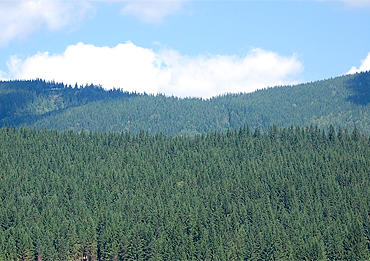Truskavets — is а unique and extremely attractive spa resort in Ukraine. It stretches in a picturesque valley of Eastern Carpathians foothill at an altitude of 350 m above sea level. It is a city of special natural beauty and crystal clear air; it is situated among lovely wooded slopes and fast flowing rivers.
The resort is located 100 km south from Lviv and 90 km from the western border. The railway connects it with the largest cities of Ukraine, CIS and Baltic countries. Between Lviv and Truskavets run shuttle trains, buses and taxis. Lviv has an international airport.
On the territory of Truskavets there are large reserves of underground mineral waters.
The popularity of the resort is great. Annually about 200 thousand people comes for treatment and rest from all over Ukraine and from abroad.
A little bit about history
The first written mention of Truskavets refers to 1469. The city's name «Truskavets» is still controversial among historians. Some people believe that «Truskavets» — is a modified form of the Polish words truskawka — strawberries. Other scientists believe that the name of the city was affected by the Lithuanian language. In Lithuanian druska — it is salt, and Carpathians — are known as a center of salt production.The date of the official foundation of balneological resort is 1827, when there was built a room for the first eight baths.
Although the medical properties of Truskavets waters were known for a long time, they were first described by the royal physician Wojciech Point in 1578. Gabriel Zhonchinsky, author of the textbook «Natural Gistoriya», published in 1721, pointed out that in Truskavets, as in other villages of Drogobychchina people produced oil, and water, that was accompanied by oil, peasants were drinking for treatment of many diseases. The first major researches were made here by German scientists N. Fichtel and B. Haq. Stanislaw Staszic wrote, in a little scientific work, published in 1805 that in addition to salt, ozokerite and petroleum are extracted here, and with distillation of oil they got kerosene, that was used for street lighting. And this was at the beginning of the XIX century! First chemical analysis of mineral water «Naftusya» was made by Lvov scientist, chemist and druggist Theodore Torosevich in 1836. This famous scientist is better known by the invention of the kerosene lamp.
At the same time the value of Truskavets has increased in the Austro-Hungarian Empire. In 1892 there were made facilities for inhalation of Vashmuta system. And that’s how Truskavets reached the level of health resorts European importance such as Rihengal and Wiesbaden. Hotels, villas, and pensions were built. A monument to Adam Mickiewicz was opened in 1900. Growing of infrastructure, building of new baths began, also bypass was laid.
In 1909 the railway with a small station was built, and in 1912 a new big station was constructed. Truskavets was directly linked by rail, as well as from Lviv to Vienna, Krakow, Poznan, Prague, Warsaw, Berlin.
In 1913 for the great success in the development of resort — its treatment base — Truskavets was awarded with the Grand Gold Medal. The development of the resort was showed by the numbers. There were 6080 guests in 1923, then in 1927 the number of visitors has increased dramatically — up to 12 633 people. In 1931 the resort was visited by 14659 people; the season of 1933 was reflected by simply unthinkable figure — 17000 people.
All this, respectively, required a new construction. One of the masterpieces of Truskavets was villa «Goplyana», built in 1928. It was made in the Polish national, so-called «Zakopane» style, which at that time was very popular in Poland. This style is based on a traditional wooden building of Carpathian highlanders. In 1950 Truskavets received city status, in 1952 — the status of all-Union health resort. Thus Truskavets has become one of the major European centers of the health industry. The resort can take each year up to 400 thousand people.


